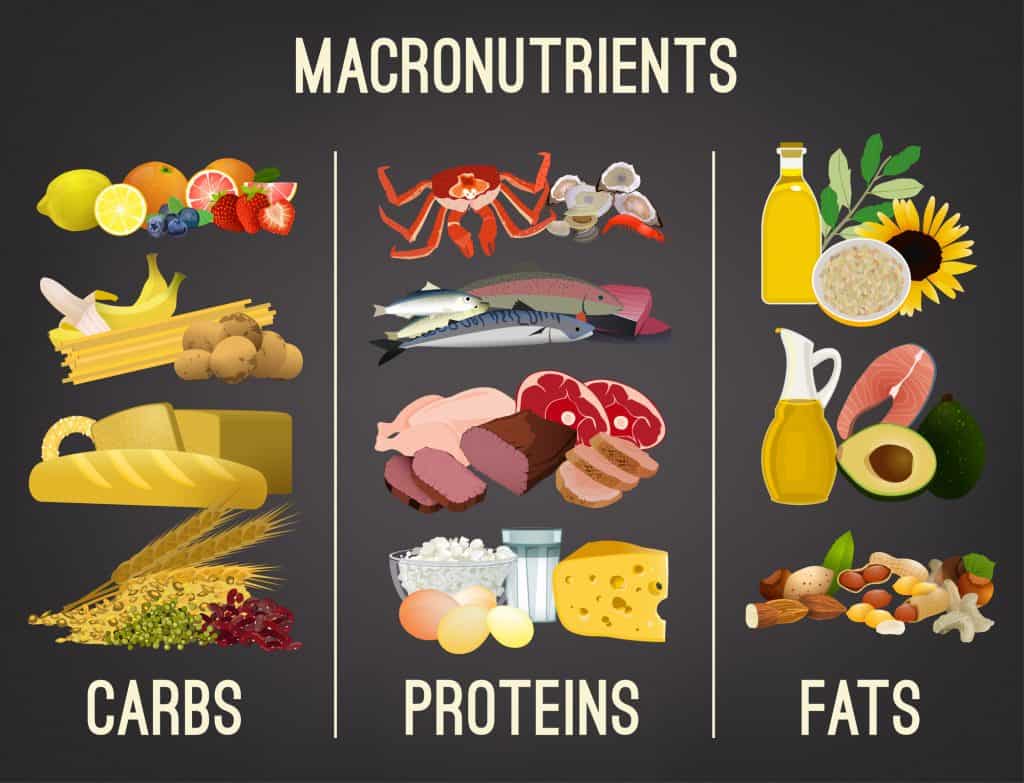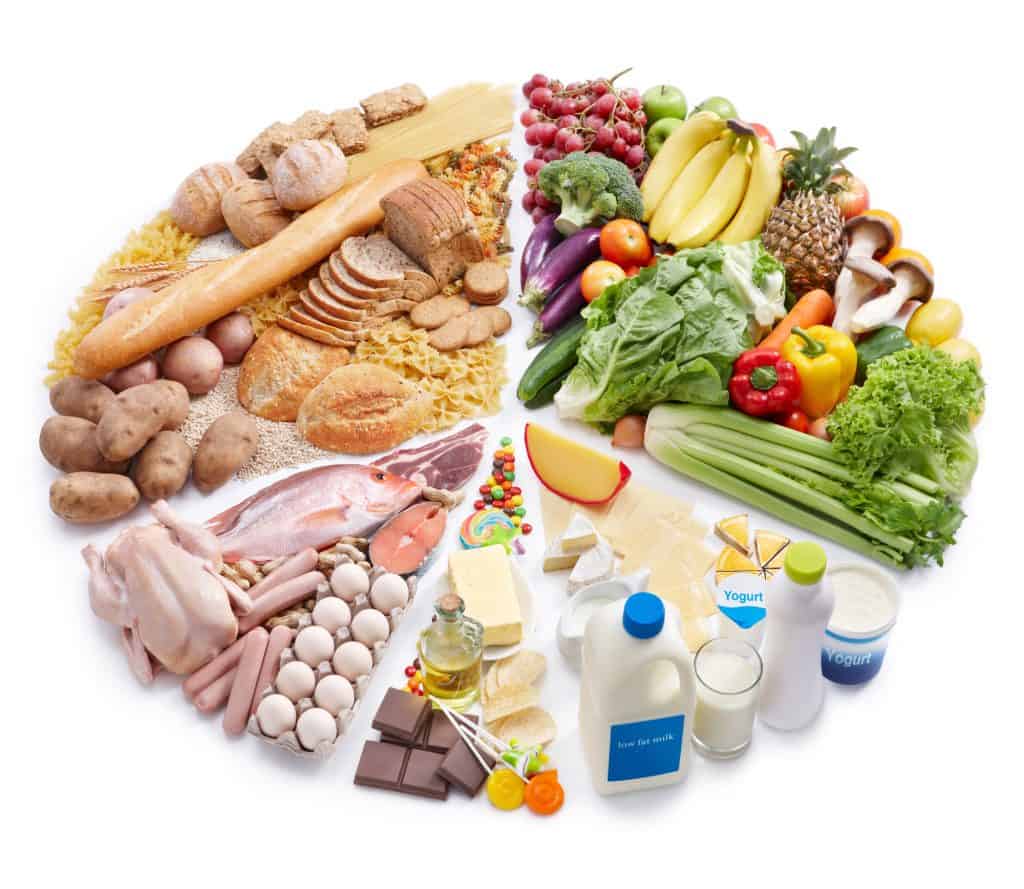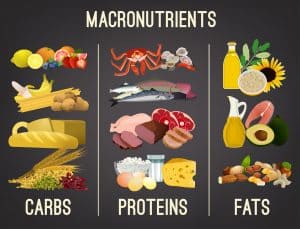Diets can be difficult, confusing, and unpleasant since they’re often restrictive. Sticking to them can be frustrating and demotivating in weight loss. I’ve found that diets that deprive me of the foods I enjoy the most are short-lived in my life, and ultimately become a waste of time.
Flexible dieting is an innovative way to reap the benefits of dieting without making the sacrifices others usually call for. It’s an effective way to enjoy what you eat, but stay healthy. It’s also gained traction when it comes to body composition. This is what you should know.
- Table of Contents
What Is Flexible Dieting?
Firstly, you should know that it’s presented under many names. Counting macros, If It Fits Your Macros (IIFYM), and flexible dieting all describe the exact same thing. Secondly, though the name suggests otherwise, flexible dieting technically isn’t actually a diet. It’s better described as a formula or diet enhancer.
When flexible dieting, all you have to do is count, track, and control the macronutrients (or macros) that you take in. There’s nothing more to it. It’s not a meal plan that tells you exactly what and when to eat, and there are no foods—or food groups—that are excluded from it.
What (and how much) you eat is entirely up to you. What matters is that you don’t exceed the recommended intake of macronutrients. This way of eating is all the rage because you can eat whatever suits your fancy.
It’s simple, right? Unfortunately, that’s not true. There is a somewhat complicated method to flexible dieting, and an understanding of nutrition is necessary to succeed in it.

What Are Macros?
Macronutrients are types—or components—of food that humans require in large amounts to stay healthy. The three macronutrients are fats, carbohydrates, and protein. Each of them serves a different purpose in our bodies, but they’re generally responsible for our cellular development.
Without them, our bodies would malfunction. Almost everything we consume—with a few exceptions—are comprised of, or contain, macros. The nutritional value is what sets everything apart. Some foods will have higher concentrations of individual macros than others—for example bread, which is high in carbohydrates but low in protein and fat.
- Carbohydrates are sugars that are our bodies’ greatest source of energy. When we ingest them, they’re converted into glucose (or blood sugar), that powers our cells.
- Protein is essentially what you are made of. It’s responsible for the structure, strength, and function of most of your body, with emphasis on your muscles and organs.
- Fats keep your body in working order. They store energy, assist the proteins, guard our organs, and keep our bodies insulated.
To simplify each role that macros play, I can use an analogy. Imagine your body as a car. Protein would be the vehicle itself—the seats, engine, tires, windshield, etc. Fats would be motor oil, and carbs would be the fuel. Take one away and your car won’t be complete or able to function.
This is why flexible dieting focuses on macros. Other diets tend to restrict the intake of macros and so are not only unsuccessful or ineffective, but unhealthy too.
How Flexible Dieting Works
To get started in flexible dieting you have to establish two things—your Total Daily Energy Expenditure (TDEE) (or maintenance calories) and your daily macro limits. Figuring these out will require some thought.
1. What’s Your TDEE (maintenance calories)?
Your TDEE is how many calories your body burns in a day. This includes all activities, including workouts, and the energy you expend while resting.
Here is a calculator to do so:
2. What Are Your Macros?
The great thing about flexible dieting is that you can adjust your macros to suit your lifestyle, needs, or fitness goals. The downside is that there is no formula to determine what that is. You will have to plan and prepare your own macro limits. Still, there are recommendations.
As a rule of thumb, or at the very least a starting point, your macros should look like this:
- Fats: 30 percent of your daily calories.
- Carbs: Between 45 and 65 percent of your daily calories.
- Protein: 0.8–1.0 grams of protein per 2.2 pounds of body weight. Or 1 grams (or more) per pound of body weight if you’re training to maintain the muscle mass.
Ideally, though, your macros should look like this: 20 percent fats, 40 percent carbs, and 40 percent protein.
Here is a calculator to figure out how many grams of each macronutrients you should consume based on your maintenance calories:
Planning Your Meals
Once you have established your TDEE and your macro targets, you can plan your meals accordingly. So long as your calories fulfill both, you can eat whatever you want.
Keep in mind that flexible dieting does not restrict carbs, protein or fats, so you don’t have to place emphasis on either. It’s still worth it to follow common sense (to put it harshly), and not binge on junk food to meet your targets.
Tracking Your Macros
You’ll have to pay attention to the calorie count (and macro values) of everything that you eat. This may be tedious, but flexible dieting won’t work if you don’t make the effort.
There are two effective ways to keep track of your macros. Food diaries are handy, simple and efficient. If pen and paper don’t suit you, there are many apps available to help you. It’s also worth it to invest in a food scale, to coincide with the nutritional labels for more accuracy.
How to Change Your Weight with Flexible Dieting
Flexible dieting isn’t only for weight loss. You can use it to supplement your muscle building as well. This will require extra planning and consideration because what (or how much) you eat will determine whether you lose, maintain, or gain weight.
To lose weight, all you have to do with flexible dieting is to eat fewer calories than your TDEE. A 20 percent reduction in calories should be enough to induce weight loss, without slowing down your metabolism or forcing your body into starvation.
If you’d rather muscle build or re-gain weight through reverse dieting, after a long cutting phase, a 20 percent increase in calories should be sufficient. While it’s likely that you will gain muscle without gaining fat, this estimate does not work for everyone. Keep in mind that you’ll have to adjust your eating plan according to your workout, and may have to consume extra protein.
Here is a calculator to determine your calories based on your weight goal:
The Pros of Flexible Dieting
Flexible dieting sounds like a flawless and revolutionary way to stay in shape and achieve your body composition goals. Apart from the apparent versatility of this regimen, there are more advantages to it.
1. It’s Not Restrictive
As mentioned, unlike refeed days and other diets that limit your intake of nutrients can cause more trouble than they’re worth. One of the greatest appeals to flexible dieting is that it’s a healthy way to manage your eating.
Regardless of what you eat, or your dietary needs (for example intolerance or choices like veganism), you’re still getting what your body needs. There are no foods that are banned or forced on you.
2. It Works
In line with how accommodating it can be, flexible dieting fits into your lifestyle so you’ll be able to endure it. Since you’re not making any sacrifices, you’ll still enjoy the foods you eat, and won’t give up because of cravings or dissatisfaction.
It also works for weight loss because tracking macros (and sticking to your TDEE) will ensure that you remain in a calorie deficit—the only way your body is able to shed pounds. This makes it an enjoyable and sustainable way to stay fit, healthy, and in shape.
A study concluded that flexible dieting had a greater impact on weight loss than other diets, once the commitment and necessary lifestyle changes were in place.
3. It’s Easier Than Restrictive Diets
You might think that this goes without saying, but I’m talking about the social aspect of it. You won’t have to make a fuss over where you eat, so it’s not only easy for you but for your social life too.
It could even be more affordable since you won’t have to spend extra money on specialized foods. Flexible dieting also eliminates effort in preparation, because you have to think about how you prepare your meals (with the exception of counting your macros).
4. Bodybuilders Can Do It
Since you can use it to gain weight too, those who wish to build muscle can use flexible dieting too. You won’t have to worry about gaining fat with your muscle, nor will you have to stick to imbalanced high protein diets.
In the same vein, you can use flexible dieting to support high-intensity workouts, by focusing on the carbs you take in for energy, similar to high carb days on carb cycling.
5. It’s Safer
One study found that restrictive diets are more likely to cause eating disorders, while flexible dieting is not.

Drawbacks to Flexible Dieting
Even though the convenience and advantages of flexible dieting are great, it’s not without flaws. There are a few considerations you’ll have to keep in mind to avoid hassle or trouble once you start it.
1. It Doesn’t Consider Micronutrients
While the emphasis on macronutrients is advantageous, a big drawback to eating this way is that it doesn’t account for components beyond them. Though the macros are the building blocks of food, you still have to take vitamins and minerals into consideration.
These are considered micronutrients, and they’re just as necessary for good health as macros are. They fight off disease, feed your brain, and nourish the parts of you that macros don’t, like your bones and eyesight. Flexible dieting overlooks them, and this could prove to be problematic.
2. It Demands Self-Control
Though it’s not a restrictive diet, the success of it is entirely dependent on your willpower. Since you won’t have a strict plan to adhere to, it can be all too easy to fall off the wagon and disregard your macros.
Since you still get to enjoy your favorite foods, you might be tempted to overdo it. You will have to be determined to stick to your targets, and enjoying what you eat could make this surprisingly tricky.
There’s also the element of being “allowed” to eat junk. Just because you can, it doesn’t mean you should. Flexible dieting is not without limits, and if you want to see results, you still have to work for them.
3. Tracking Your Macros Can Be Tiresome
There’s not much more to this one. Counting every calorie is tedious. Though you still get to enjoy what you eat, thinking about nutritional values constantly is a pain.
Even though food diaries, apps, and scales make this easier, there is still the effort of having to put them to use.
4. There’s Math Involved
If you have any hope of flexible dieting working for you, you have to do the calculations. You also have to have a working understanding of nutrition, so that your macros will be accurate.
While you don’t have to be a rocket scientist to get it right, flexible dieting demands a lot more thought than the simpler, stricter diets that tell you what you can and cannot indulge in.

How to Create a Flexible Meal Plan
This is the tricky part. For one, your meals have to be tailored to you, so you can’t copy others, unfortunately. Macros are based on individual numbers, so you will have to put your own meal plan together based on your body’s needs.
You will also have to base your meals on what you want to achieve. Meals for weight loss are different from those for muscle building, and you’ll want to place emphasis on different macros in each case.
The last consideration here is to remember that micronutrients aren’t accounted for. Even if you use other meal plans as templates for your own, you will have to include the nutrients that are missing for a more comprehensive diet.
Let’s not forget that some people have special dietary needs, and if that’s the case, meal plans can easily be altered to reflect that.
When building your meal plan, remember that if you want to gain weight you should exceed your macros. If you want to shed weight, you must eat with a calorie deficit, and if you want to maintain your weight, you should aim to match your macros.
That said, here’s a look at simple flexible meal plans. These are just examples, so if it doesn’t fit your macros, you shouldn’t stick to it. Feel free to alter it so that it does, of course.
In both of the examples above, both subjects still enjoy wholesome meals that taste good and aren’t restrictive.
Example 1 — For Muscle Building
This example shows how you can use flexible dieting to accommodate your lifestyle. It’s for a 180-pound male who supplements for weight lifting. It amounts to 2300 calories a day of which 225 grams are protein, 220 grams are carbs, and 55 grams are fat. This is what the subject could eat in a day, over the course of five meals:
- 2.5 servings of cereal.
- 4 servings of a whey protein supplement.
- 2 slices of whole wheat bread.
- 8 sushi rolls.
- 114 grams of salmon.
- 113 grams of turkey.
- 1 slice of fat-free cheese.
- 114 grams of steak.
- A handful of blueberries.
- A serving of broccoli.
- Helping of spinach salad.
- 2 bags of chips.
- 2 helpings of ice cream.
Example 2 — For Weight Loss
This is based on a 150-pound female. It totals 1651 calories a day, of which 160 grams are carbs, 150 grams are protein, and 46 grams are fats:
- A serving of blueberry oatmeal.
- A helping of almonds.
- Tilapia lettuce wrap.
- Protein smoothie.
- Grilled chicken salad.
- A small serving of low-fat ice cream.
The Takeaway
Flexible dieting is an excellent way to control what you eat without putting yourself at risk of macro deficiencies. Science shows that flexible dieting is a healthy and effective way to lose weight or maintain body composition goals. It’s more enjoyable than traditional dieting, and it accommodates everyone, regardless of fitness or dietary needs.
On the other hand, thought is a prerequisite, and it’s not a system you can dive into blindly. The disregard for micronutrients is a concern that could potentially lead to illness or vitamin deficiencies. You still have to put some effort and preparation into this system.
The question is not whether or not flexible dieting will work for you (because it probably will), but rather if it’s worth it. With the right mindset, dedication, and a full understanding of what your body needs, it could prove to be highly successful. I think it’s worth a shot.













